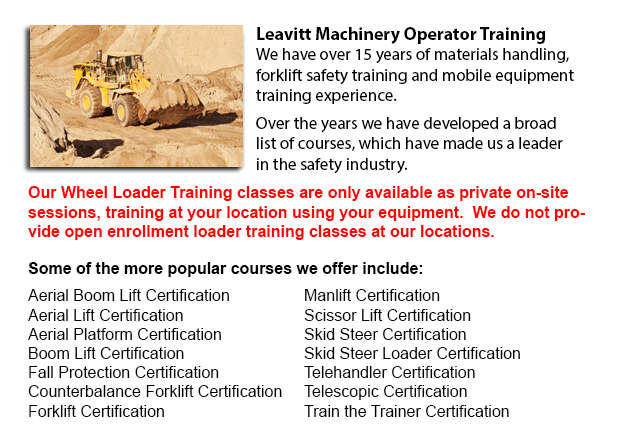
Forklifts are accessible in various load capacities and various models. Nearly all forklifts in a regular warehouse setting have load capacities between 1-5 tons. Bigger scale models are utilized for heavier loads, such as loading shipping containers, may have up to fifty tons lift capacity.
The operator can use a control to be able to lower and raise the forks, that may also be called "tines or blades". The operator of the forklift has the ability to tilt the mast to be able to compensate for a heavy loads propensity to angle the forks downward. Tilt provides an ability to operate on rough surface as well. There are yearly competitions for skillful forklift operators to compete in timed challenges as well as obstacle courses at regional lift truck rodeo events.
General use
All forklifts are rated for safety. There is a specific load limit and a specific forward center of gravity. This very important info is supplied by the maker and positioned on the nameplate. It is important cargo do not go over these details. It is prohibited in a lot of jurisdictions to tamper with or remove the nameplate without obtaining permission from the forklift maker.
Nearly all lift trucks have rear-wheel steering to be able to increase maneuverability. This is very effective within confined spaces and tight cornering areas. This kind of steering differs fairly a little from a driver's initial experience with various motor vehicles. As there is no caster action while steering, it is no necessary to use steering force so as to maintain a continuous rate of turn.
Another unique characteristic common with forklift utilization is unsteadiness. A constant change in center of gravity takes place between the load and the forklift and they need to be considered a unit during utilization. A forklift with a raised load has centrifugal and gravitational forces which can converge to result in a disastrous tipping accident. So as to avoid this possibility, a lift truck should never negotiate a turn at speed with its load raised.
Lift trucks are carefully built with a load limit intended for the forks. This limit is lowered with undercutting of the load, that means the load does not butt against the fork "L," and also lessens with blade elevation. Normally, a loading plate to consult for loading reference is positioned on the lift truck. It is unsafe to use a forklift as a worker hoist without first fitting it with certain safety equipment like for example a "cherry picker" or "cage."
Lift truck utilize in warehouse and distribution centers
Essential for whatever distribution center or warehouse, the lift truck has to have a safe setting in which to accommodate their efficient and safe movement. With Drive-In/Drive-Thru Racking, a forklift must travel inside a storage bay that is several pallet positions deep to set down or obtain a pallet. Operators are often guided into the bay through rails on the floor and the pallet is placed on cantilevered arms or rails. These tight manoeuvres require well-trained operators in order to complete the job safely and efficiently. In view of the fact that each and every pallet needs the truck to go into the storage structure, damage done here is more common than with different types of storage. When designing a drive-in system, considering the dimensions of the tine truck, together with overall width and mast width, must be well thought out to be certain all aspects of an effective and safe storage facility.
-
Kitchener Forklift Training Schools
Kitchener Forklift Training Schools - The Advantages Of Taking One Of Our Forklift Training Schools Are you searching for work as a driver of a forklift? Our regulatory-compliant mobile equipment operator training offers instruction in types of fo... More -
Kitchener Overhead Crane Operator Training
Kitchener Overhead Crane Operator Training - Our overhead crane operator training course is designed to teach employees the basics of overhead crane/sling operation and pre-shift checks. Courses are taught by our expert trainers and consultants. Well... More -
Kitchener Crane Training School
Kitchener Crane Training School - The crane training school offers industry-relevant programs. Courses provide trainees with learning outcomes which match present industry demands. Our small class sizes combine hands-on experience and theory. Our qua... More -
Kitchener Skid Steer Ticket
Kitchener Skid Steer Ticket - The lift arms on the skid-steer loader are located at the side of the driver along with pivots behind the driver's shoulders. These features makes the skid-steer loader different as opposed to the conventional front load... More -
Kitchener Manlift Operator Certification
Kitchener Manlift Operator Certification - Our scissor platform and aerial lift training and certification empowers participants with a knowledge and general understanding of the efficient and safe use of "Power Operated Mobile Work Platforms," under... More -
Kitchener Crane Safety Training
Kitchener Crane Safety Training - Companies and crane operators have to be aware of the problems related to crane safety. Legislation provides rules for the safe operation, inspection and maintenance of lifting machines all around North America. Cran... More -
Kitchener Forklift Training Programs
Kitchener Forklift Training Programs - Are you searching for work as a forklift driver? Our regulatory-compliant mobile equipment operator training offers instruction in kinds of forklifts, pre-shift check, fuel kinds and dealing with fuels, and safe... More -
Telehandler Training in Kitchener
Telescopic handlers often known as telehandlers for short, are an extremely popular piece of heavy construction machinery. They are commonly used in the construction and agricultural industries. These equipments have extreme reaching ability and can... More

Forklift Certification Kitchener
TOLL FREE: 1-888-254-6157
Kitchener, Ontario
forkliftcertificationkitchener.com
Email Us
About Us


